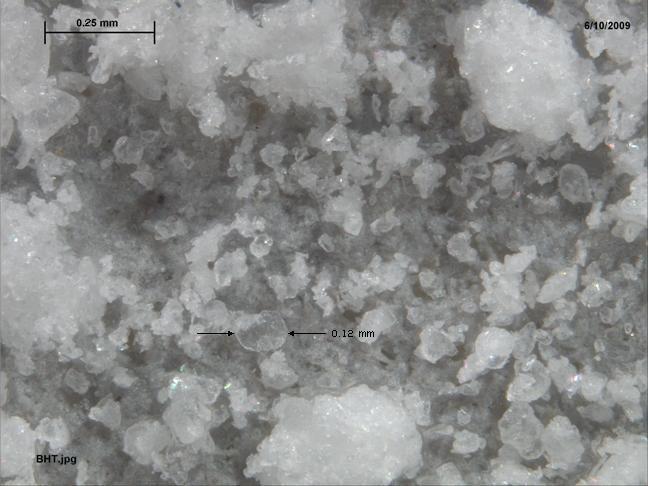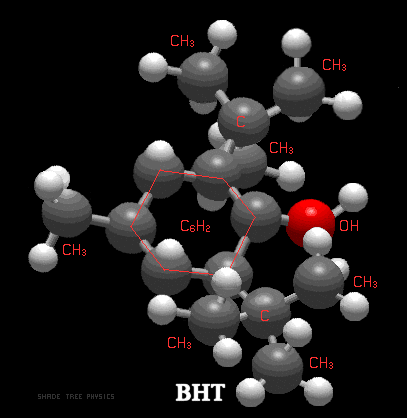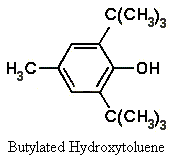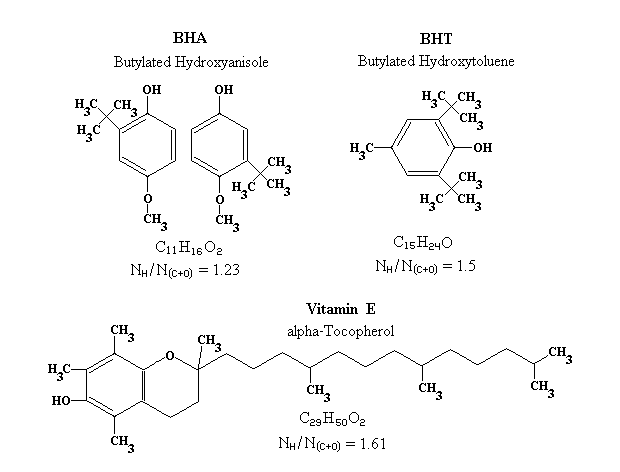The (fat-soluble) crystaline phenolic antioxidant butylated hydroxytoluene (BHT) was patented in 1947 and received approval for use as a food additive and preservative by the U.S. Food and Drug Administration in 1954.(1)
In 2008 researchers in Taiwan reported finding that BHT is produced naturally by four different kinds of freshwater phytoplankon.(2)

Microscopic Image of BHT (White Crystalline Powder) Showing Individual Crystals
(Courtesy: Jack Reed, Department of Entomology, Mississippi State University)
The following is a stick figure drawing of a BHT molecule. [A wilder version of it
has been retired.]

![]()
Stick Diagram and Formula for BHT Molecule
Grey = Carbon; White = Hydrogen; Red = Oxygen

BHT molecules host seven CH3 methyl groups. A methyl group consists of three hydrogen atoms bonded to a carbon atom which is linked to the remainder of a molecule.(3)
Since BHT molecules have a single oxygen atom (electronegativity 3.44, compared to 2.20 for hydrogen and 2.55 for carbon) near one tip of their longitudinal axis they may be electrically polarized. I have seen no figures for their dipole moment. [Added 15 Sep 2014.]

Structural comparisons of Antioxidants BHA, BHT and Vitamin E
John J. Manura(4) summarizes a gas chromatography/mass spectrometry (GC/MS) study to measure volatile and semi-volatile organics (including BHA and BHT) in food and pharmaceutical packaging. He cites an earlier study(5) focused on quantifying BHA and BHT in food cereals.
Comparing the Antioxidant Activity of BHT with Two Other Antioxidants
Here is a copy of Table 2 in the article from which the two preceding statements were drawn.
Table 2. Antioxidant activity of Berberis vulgaris extracts, BHT and Vitamin E using the Thiobarbituric acid method (TBA).